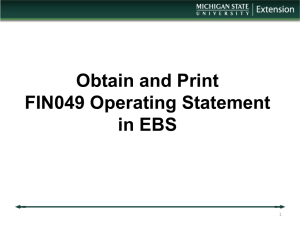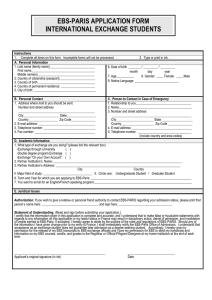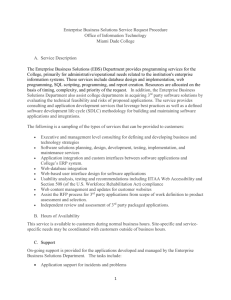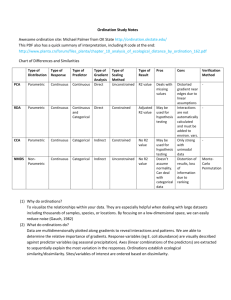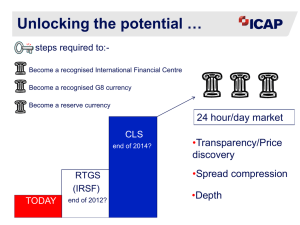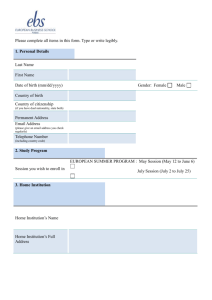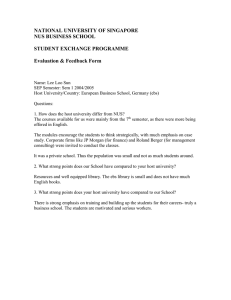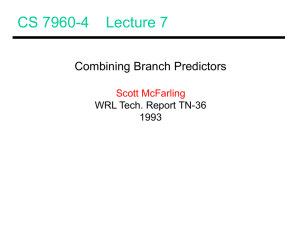NOAA/CIMSS ProbSevere Model (ProbSevere)
advertisement
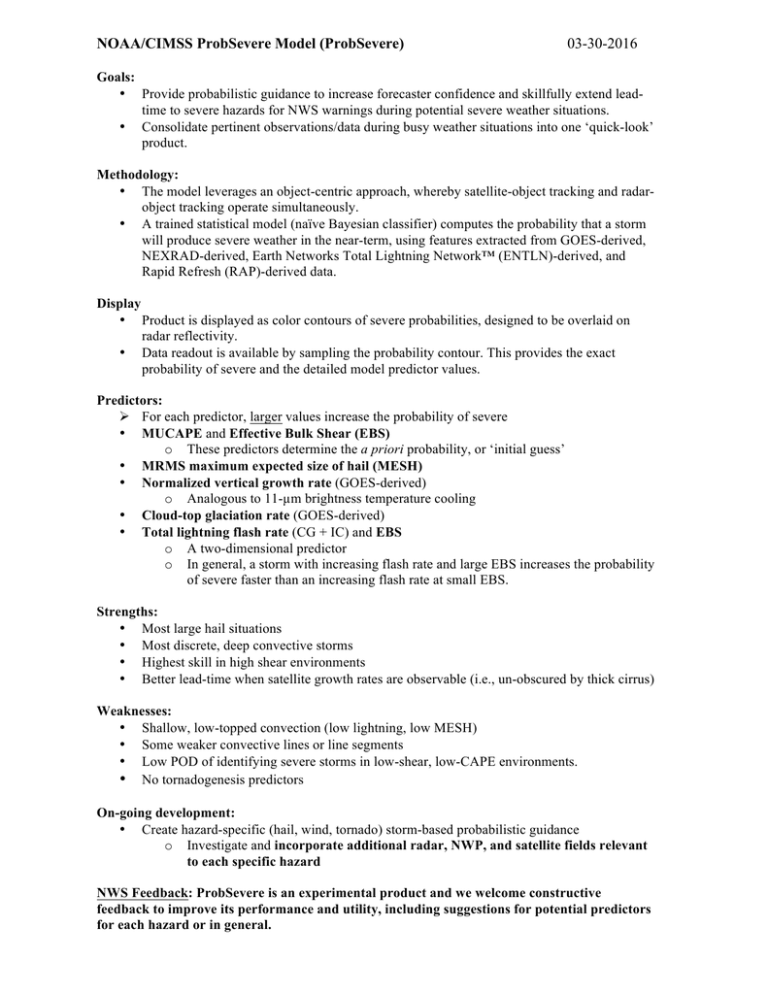
NOAA/CIMSS ProbSevere Model (ProbSevere) 03-30-2016 Goals: • Provide probabilistic guidance to increase forecaster confidence and skillfully extend leadtime to severe hazards for NWS warnings during potential severe weather situations. • Consolidate pertinent observations/data during busy weather situations into one ‘quick-look’ product. Methodology: • The model leverages an object-centric approach, whereby satellite-object tracking and radarobject tracking operate simultaneously. • A trained statistical model (naïve Bayesian classifier) computes the probability that a storm will produce severe weather in the near-term, using features extracted from GOES-derived, NEXRAD-derived, Earth Networks Total Lightning Network™ (ENTLN)-derived, and Rapid Refresh (RAP)-derived data. Display • Product is displayed as color contours of severe probabilities, designed to be overlaid on radar reflectivity. • Data readout is available by sampling the probability contour. This provides the exact probability of severe and the detailed model predictor values. Predictors: Ø For each predictor, larger values increase the probability of severe • MUCAPE and Effective Bulk Shear (EBS) o These predictors determine the a priori probability, or ‘initial guess’ • MRMS maximum expected size of hail (MESH) • Normalized vertical growth rate (GOES-derived) o Analogous to 11-µm brightness temperature cooling • Cloud-top glaciation rate (GOES-derived) • Total lightning flash rate (CG + IC) and EBS o A two-dimensional predictor o In general, a storm with increasing flash rate and large EBS increases the probability of severe faster than an increasing flash rate at small EBS. Strengths: • Most large hail situations • Most discrete, deep convective storms • Highest skill in high shear environments • Better lead-time when satellite growth rates are observable (i.e., un-obscured by thick cirrus) Weaknesses: • Shallow, low-topped convection (low lightning, low MESH) • Some weaker convective lines or line segments • Low POD of identifying severe storms in low-shear, low-CAPE environments. • No tornadogenesis predictors On-going development: • Create hazard-specific (hail, wind, tornado) storm-based probabilistic guidance o Investigate and incorporate additional radar, NWP, and satellite fields relevant to each specific hazard NWS Feedback: ProbSevere is an experimental product and we welcome constructive feedback to improve its performance and utility, including suggestions for potential predictors for each hazard or in general.
